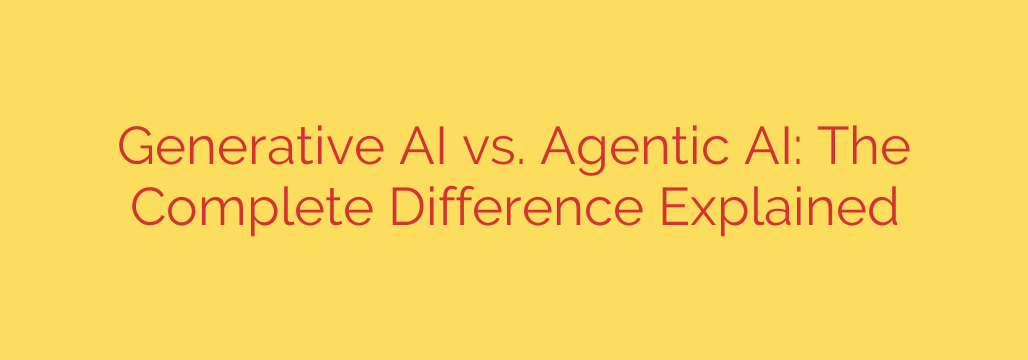
As artificial intelligence continues its rapid evolution, two distinct paradigms are shaping its future: Generative AI and Agentic AI. While both represent significant advancements, they operate on fundamentally different principles and serve unique purposes, offering powerful capabilities that address different aspects of tasks and interaction.
Generative AI, perhaps the most widely recognized form today, excels at creating new content. Its core function is to produce original outputs based on the data it was trained on. Think of it as a sophisticated engine for synthesis and creation. Given a prompt, Generative AI can generate text, images, music, code, or even videos that are novel yet contextually relevant. Its power lies in its ability to understand patterns, styles, and structures from vast datasets and apply that knowledge to invent something new. This makes it invaluable for creative tasks, content generation, and information synthesis, operating largely as a reactive system responding to specific inputs. It doesn’t inherently plan or execute sequences of actions; its goal is the output itself.
In contrast, Agentic AI focuses on action and goal achievement. Rather than just creating content, an Agentic AI is designed to reason, plan, and execute a series of steps to reach a defined objective. It’s about autonomous behavior and problem-solving in a dynamic environment. An Agentic AI can break down complex goals into smaller, manageable tasks, monitor its progress, adapt to changing conditions, and even learn from failures to improve its strategy. It embodies a more proactive approach, taking initiative to navigate workflows, interact with tools, and make decisions to move closer to its target state. Think of it as an AI that does, orchestrating actions across various platforms or within a system to achieve a user-defined outcome.
The key difference lies in their primary function and autonomy. Generative AI is primarily about output creation based on input, functioning reactively. Agentic AI is about goal execution through planned actions, demonstrating proactivity and often involving interaction with external environments or tools.
While distinct, these two paradigms are not mutually exclusive and can be incredibly powerful when combined. A future Agentic AI could leverage Generative AI capabilities to, for instance, write an email as part of a larger goal like scheduling a meeting, or generate a report summary after gathering data. The synergy between creation (Generative) and action (Agentic) promises to unlock even more sophisticated and autonomous AI systems capable of handling complex tasks from ideation through completion. Understanding this fundamental difference is crucial to harnessing the full potential of next-generation AI technologies.
Source: https://collabnix.com/what-is-the-difference-between-generative-ai-and-agentic-ai-a-complete-guide/








